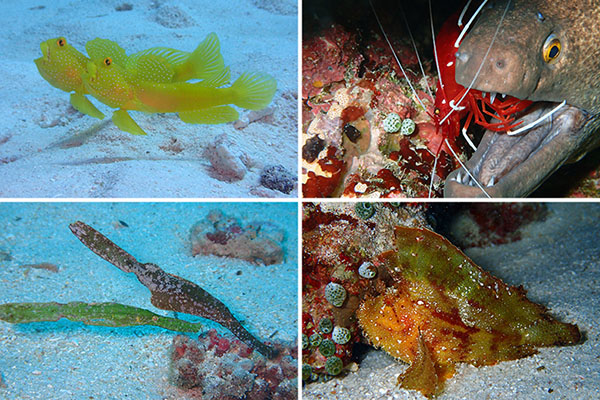
Three main types of diving
There are three main types of diving on Ishigaki Island, depending on the dive site.
【Macro diving】・・・The word “Macro” refers to the macro lens of a camera. Macro diving is a type of diving in which you can enjoy looking for small creatures at a distance of 10 to 20 cm.
The target species include numerous nudibranchs, shrimp, crabs, gobies, and many other colorful sea creatures. Diving locations vary from sandy areas to rocky areas and coral reefs.
【Seascape diving】While macro diving focuses on small creatures, seascape diving focuses on the dynamic topography of underwater rocky areas.
There is a wide variety of seascape points such as arches, caves, mazes, etc.
The light shimmering from above like a curtain is a breathtaking underwater sight. In the summer, some arches and caves are filled with millions of glittering small fish that move in synch.
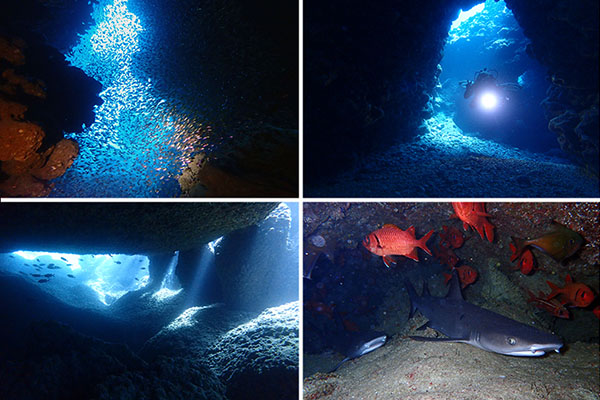
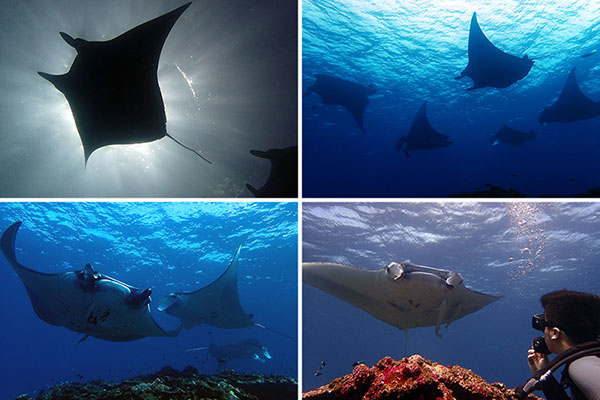
【Manta Point】・・・Ishigaki Island boasts one of the highest rates of manta encounters in the world, and many divers come to Ishigaki Island in search of these giant fish swimming gracefully. Unlike smaller fish, manta rays are not found everywhere, but there are still several places where they often gather in Ishigaki Island and the surrounding islands.
The most famous area is the Kabira area on the north side of Ishigaki Island, with typical points such as Manta Scramble and Manta City. These points have cleaning stations where mantas come around to have their bodies cleaned by small cleaner fish.
Yonara Channel, located between Kohama Island and Iriomote Island, is a drift point with a depth of 25 m. It is for advanced divers, and you can see manta rays passing over the white sandy beach.
At these manta points, the rule is to land on the bottom and observe the manta rays. Please be sure to follow the instructor’s instructions: do not chase them, do not touch them, do not block their path, do not swim over them, etc.
Diving Area
Prime Scuba Ishigaki’s 60-foot dive boat, Blue Swan, covers Ishigaki and the surrounding islands of Taketomi, Kohama, Kayima, Iriomote, Kuroshima, and Aragusuku, and several times a year, when sea conditions are favorable, we also offer expeditions to Hateruma Island, the southernmost inhabited island in Japan, about an hour and a half away.
Daily dive sites are determined on the morning of the dive day, taking into account sea conditions and guest requests, so that each dive can be as different as possible.
However, many guests want to see manta rays, and in many cases, especially during the busy summer season, the likelihood that one of the three daily flights will be to manta points is very high. In contrast, during the off-season in winter, there is more flexibility.
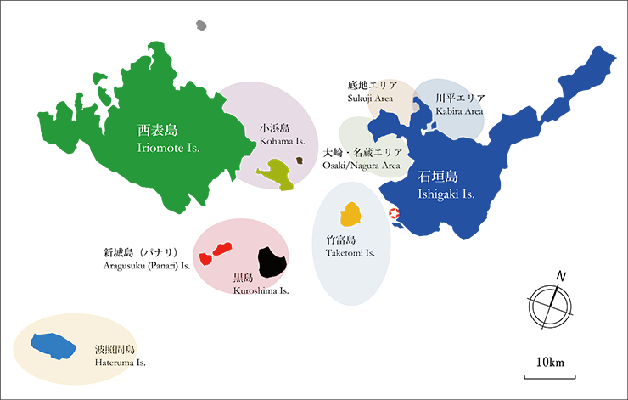
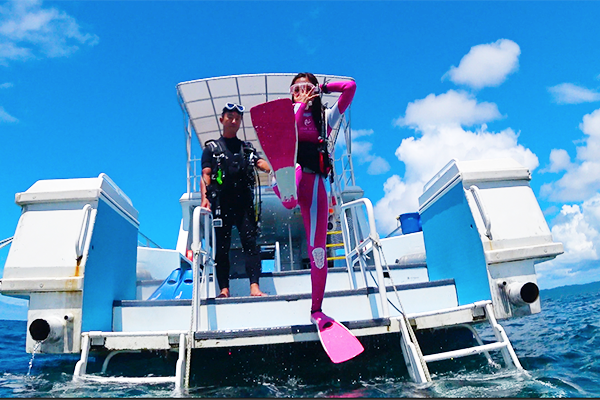
Diving style
All dives at Prime Scuba Ishigaki are boat dives.
Usually, after arriving at the point, the anchor is dropped, the boat is secured, and we enter the water from the rear of the boat. Entry can be done either by giant-stride or slowly using a rudder. Just before the end of the dive, we will make a safety stop at the rear of the boat before exiting the dive.
After departing at 8:30 am, we will not return to the harbor until after two dives in the morning and one dive in the afternoon. You will spend the whole day on the boat including lunch, but Blue Swan is one of the largest diving vessels in Ishigaki Island, so you will be able to spend your time comfortably.







